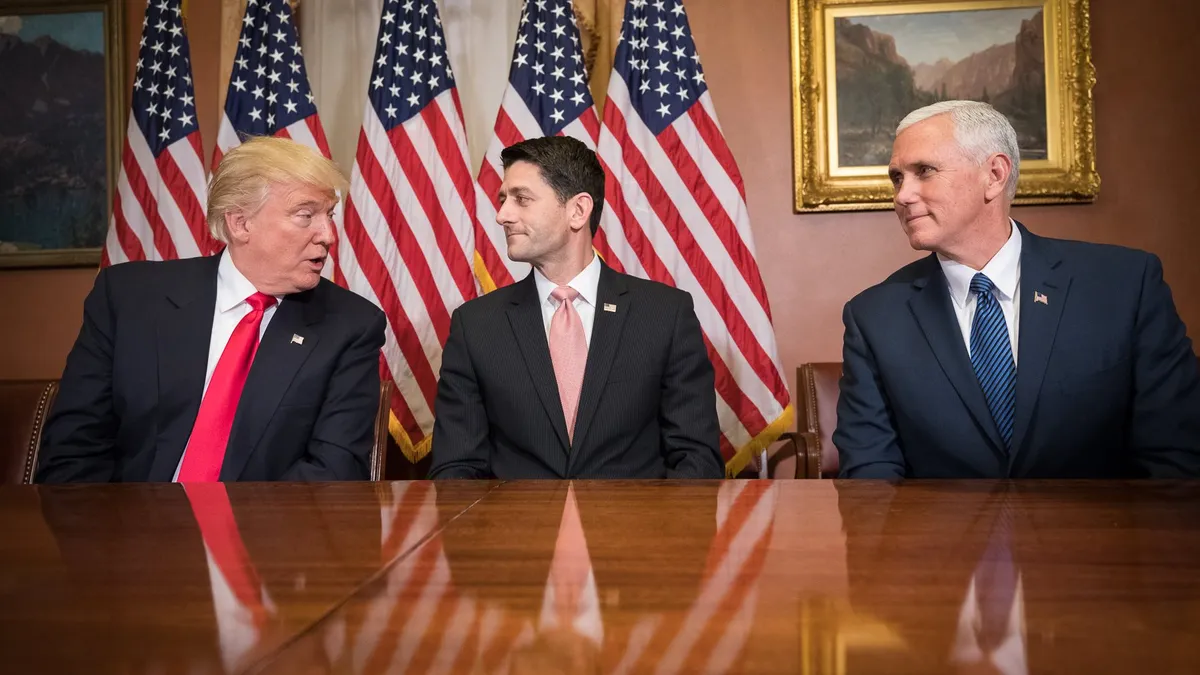UPDATE: President Trump's newly proposed 2018 budget would cut funding for the Environmental Protection Agency by 31%, down to $5.7 billion, and includes plans for approximately 3,200 fewer positions, as reported by Reuters.
This plan would discontinue funding entirely for the Clean Power Plan, Energy Star, infrastructure for Alaska Native Villages and a host of other areas. The Hazardous Substance Superfund Account, Office of Research and Development, Office of Enforcement and Compliance Assurance and categorical grants would also see significant cuts. As described in the proposal, these cuts would limit the EPA's focus to statutory requirements and leave the rest to state environmental agencies. Climate change funding would no longer be a priority.
EPA Administrator Scott Pruitt indicated he did not plan to cut grant funding and requested smaller cuts at a recent White House meeting, as reported by The New York Times. These wishes were not reflected in the current proposal.
While the EPA is the most heavily affected, cuts have also been proposed for environmental programs at a number of other agencies such as the Department of State, Department of Energy and National Oceanic and Atmospheric Administration. Many legislators and environmental groups have adamantly opposed this proposal, setting it up for contentious negotiations in the weeks ahead.
Dive Brief:
- Sources indicate that President Trump's budget proposal will include a 24% cut to the Environmental Protection Agency's (EPA) $8.1 billion budget, as reported by The Washington Post and other publications.
- Part of these cuts would include reducing the current staff of 15,000 people down to 12,000, done partially through buyouts to encourage early retirements. This would put staffing at its lowest level in decades.
- Other potential cuts include grants for brownfield cleanup, a national electronic manifest for hazardous waste, environmental justice programs and the Energy Star program. Funding for climate change programs and Alaskan villages would also be cut. Additionally, the EPA's Office of Research and Development could also see a 42% cut.
Dive Insight:
This is part of Trump's overall budget proposal, which reportedly calls for large cuts to the State Department and a $54 billion increase in military spending. These ideas are already seen as a tough sell for members of Congress from both parties. Counter to this proposal, some Democrats have recently advocated for a large increase in the amount of grant funding managed by the agency. EPA Administrator Scott Pruitt has previously said cuts to grant funding would be off the table and recently said the proposed cuts were concerning.
As envisioned by Pruitt, the EPA should shift more regulatory authority to state environmental agencies. Doing this with large cuts to grant funding and staffing could be challenging. Many state agencies have their own budgetary constraints and also defer to the EPA on hazardous waste cleanups or permitting issues involving the Resource Conservation and Recovery Act, among other federal statutes.
Pruitt's track record with the industry is limited, as indicated by his written responses to a confirmation questionnaire, so it's unclear whether waste-related funding will be a priority for him in budget discussions. Obama era priorities such as environmental justice and climate change may receive less support than areas such as brownfield cleanup where a direct economic development argument can be made. As seen recently in Alaska, federal grants are also a key part of hazardous waste clean-up programs in villages and small municipalities. Elected officials can be expected to push back on the loss of funding for projects in their districts, setting the administration up for an even tougher path toward realizing this proposal.











